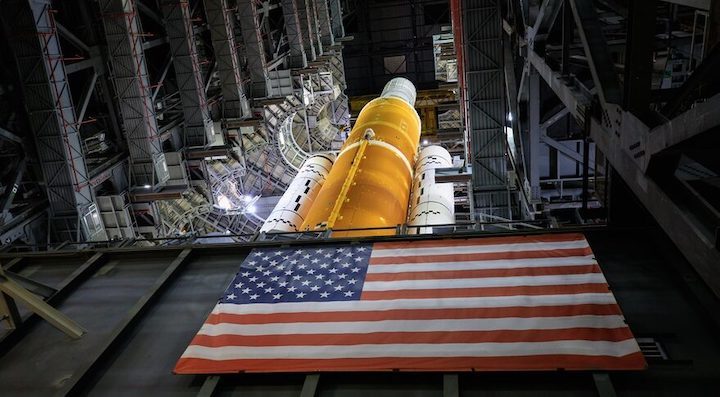18.11.2021

LAS VEGAS — NASA’s plans to return humans to the moon, which it already pushed back to at least 2025, could be further delayed, the agency’s inspector general warned Nov. 15.
In a report on the Artemis program, NASA’s Office of Inspector General (OIG) said that NASA’s timeline to develop a crewed lunar lander through the Human Landing System program is far too aggressive compared to past efforts to develop major programs.
“We found the HLS development schedule to be unrealistic when compared to other major NASA space flight programs,” the report stated. “Specifically, space flight programs in the last 15 years have taken on average about 8.5 years from contract award to first operational flight and the HLS Program is attempting to do so in about half that time.”
The report noted that NASA was aware of the schedule issues for some time, citing a February 2020 report for the agency by The Aerospace Corporation that concluded that a lander would not be ready until mid-2026. The OIG report concluded that, based the average delays in recent major NASA spaceflight programs, “we estimate the HLS Program could face up to 3.4 years of delays before operational flights begin.” That would push out the landing, originally planned for late 2024, to as late as 2028.
That would affect overall Artemis plans, even if other elements, like the Space Launch System and Orion, remain on their current schedules. The OIG report stated that NASA officials “raised the possibility of using Artemis III to complete an additional fly-by of the Moon rather than a lunar landing mission should necessary systems not be available in time.”
The study, prepared when NASA was projecting a late 2021 launch for the first SLS/Orion mission, Artemis 1, concluded that mission will likely launch in the spring of 2022 “with a higher probability of launch—in our estimation—by summer 2022.” NASA announced Oct. 22 that it was targeting no earlier than Feb. 12, 2022, for the launch.
The report also criticized NASA for cost accounting of Artemis. “NASA does not have a credible estimate that consolidates all Artemis costs across mission directorates,” it stated. OIG’s analysis of budget data and projections concluded that NASA will spend, from fiscal year 2012 through 2025, $93 billion on the various elements of Artemis.
A single Artemis mission, it added, will cost NASA $4.1 billion. That includes $1.3 billion for the Orion spacecraft — a figure that includes $300 million for the service module that the European Space Agency provides through a barter agreement — and $2.2 billion for the SLS. Ground systems account for the remaining $568 million.
NASA, however, rejected recommendations by OIG to develop an overall Artemis cost estimate or improve accounting of per-mission costs. “NASA is already following best practices and Agency policy in providing cost estimates and commitments for Agency-approved programs and projects,” stated Jim Free, NASA associate administrator for exploration systems development, in a response included in the report. He noted Artemis is “the campaign of the Agency’s efforts towards lunar exploration” and not an official program.
Those high costs led OIG to suggest NASA eventually consider alternatives to SLS and Orion. “In the near-term, the SLS is the only launch vehicle with the capability to lift the 27-metric ton Orion capsule to lunar orbit. However, in the next 5 to 7 years other human-rated commercial alternatives may become available,” it stated, such as SpaceX’s Starship/Super Heavy and Blue Origin’s New Glenn.
“Although Congress mandated that NASA build the SLS and Orion for its space exploration goals in 2010, the Agency may soon have more affordable commercial options to carry humans to the Moon and beyond,” the report stated. “In our judgment, the Agency should continue to monitor the commercial development of heavy-lift space flight systems and begin discussions of whether it makes financial and strategic sense to consider these options as part of the Agency’s overall plan to support its ambitious space exploration goals.”
While the OIG report included no specific recommendations to NASA about considering alternatives to SLS and Orion, agency leaders have stated that they believe those vehicles remain the only way to carry out human missions to the moon.
At a Nov. 9 briefing updating the schedule for the Artemis program, a reporter asked if NASA would consider using SpaceX’s Starship in place of SLS and Orion for launching humans to the moon, since it already plans to use Starship as a lunar lander. “I don’t think that would work from an architecture perspective,” Free responded.
“Right now there’s only one rocket that’s capable of doing this, and this is SLS and Orion on top,” NASA Administrator Bill Nelson said. “We’re going with what we’ve got, and if anybody comes up with another alternative, we’re glad to look at any other alternative.”
Quelle: SN
